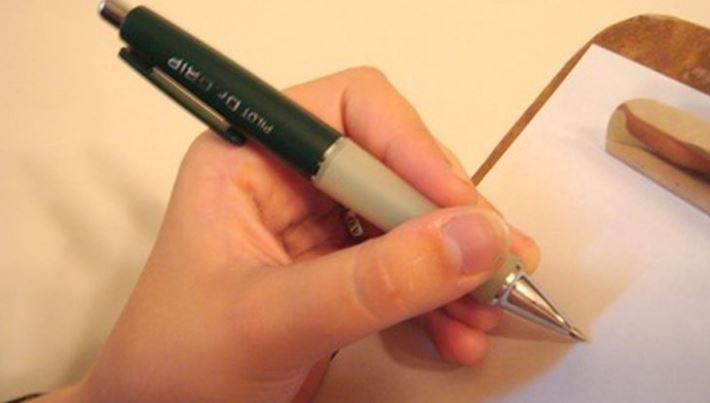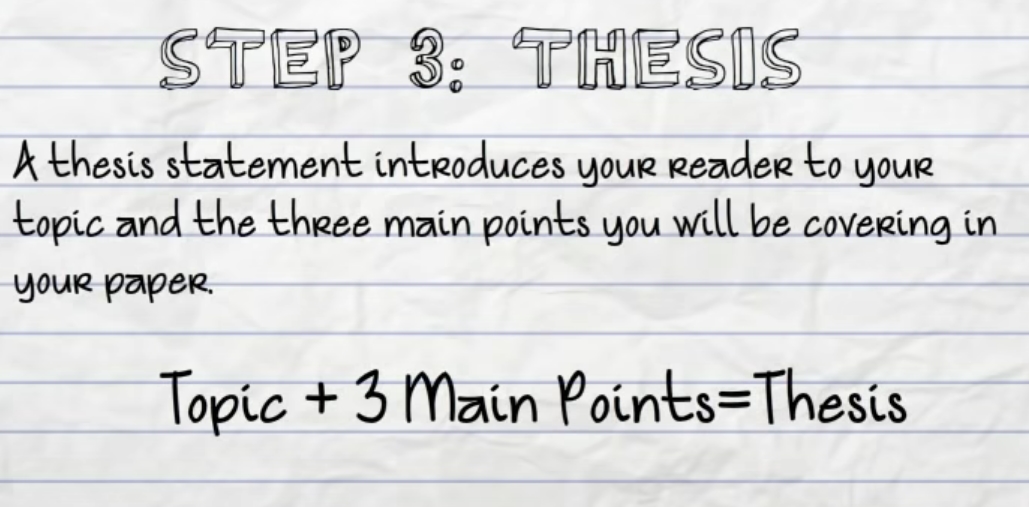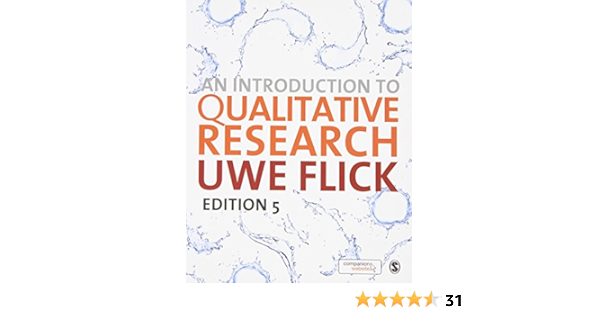
Sometimes, it is best to explore an example of an introduction in a research paper in order to understand it better. Check out the example that we have created:
Developing a statement in the main body, you will need some literature sources to refer to. While your idea can sound a bit subjectively, if you maintain it with citations extracted from works of famous scientists, authors, or philosophers, you will prove your point. Don’t neglect modern time scholars that are being deeply concerned about the issue or opinion you stated. The introduction should briefly state what the literature will be about.
"A strong introduction to a research paper should probably be written last. The introduction needs to include: 1) what the topic is focused on, 2) how the research was conducted(method), 3) what the findings are (generally), 4) and how the paper contributes to the overall field. These items are often unanswerable until the paper is complete. An introduction should also absolutely have a few sentences that specifically detail what they will read in the upcoming pages. Research Papers are NOT like fiction writing where you might want to sustain the mystery—instead,you want to show them the payoff up front. If the reader gets to the end of the introduction and does not know what to expect in the rest of the paper, you may have missed the mark."
Dr. Elizabeth M. Minei, PhD, Associate Professor at Baruch College, Founder and C.E.O. of EMinei Consulting
Readers need to know not only why you are conducting a particular research topic, but also how you intend to do it. It means that your introduction should set out the structure that will be followed in your article. It will allow a reader to easily navigate between different parts and make sure that it all makes sense.
State Your Thesis
_1568118756-min_1614615284.jpg)
The thesis statement marks the conclusive part of the introduction for the research paper or research summary and transition to the actual research. This sentence supports all the things you have written before and collects all your ideas in a logical and concise saying. If your subject is too complicated, you should make the thesis statement comprehensible with it. The thesis is what runs through your paper. That’s why the intro where a thesis is stated sets the tone for the entire work.
If all these are ready, the only thing left is to make the outline for research paper structure.
- Introduce your topic.
- Create some context and background.
- Tell your reader about the research you plan to carry out.
- State your rationale.
- Explain why your research is important.
- State your hypothesis.
How do you write an introduction for a research paper?

Although writing an introduction for your research can be felt harder than writing the research itself, legitimate essay writing service might come in handy. Nevertheless, here are 5 tips for a smoother writing of your introduction of your research paper:
The objective of the research paper is known through the introduction and it should highlight the aim of the investigation. This should be easily identified by your readers.
This step can make writing your introduction a lot faster as well as effective. Creating an outline for your introduction means creating a rough sketch with some information based on the research paper topic which will give a face to all the information collected by putting it in an organized manner. You start to do so by writing random thoughts and ideas on the paper and then shaping them up in an appropriate manner which can make some sense.
This part can be a tedious job for people who do not follow an organized format in creating it. An introduction to a research paper should be as precise as possible and not more than 2-3 pages, although the length of the introduction completely depends on the topic of the research.
1) The topic should be narrowed down:

The very first step to being taken before writing an introduction is choosing a broad topic and then narrowing it down to be more specific. On the other hand, you can also use a topic on which you have previously conducted a research and expand it. This method will assist in writing an introduction quickly since the topic will be known to you and you will be in touch with all the information that you have collected about it.
This is a step in the writing of an introduction which you just can afford to miss or forget. Although the thesis statement doe nothing more than stating the main basic idea of your research but it is the life of an introduction. It should be comprised as briefly as possible and should be concise and up to the point but along with that, it should throw light on the theme of the research paper.
An introduction to any kind of content is a summary or a synopsis of what is written in the content . An introduction to a research paper provides its readers with a vision of what to expect in the rest of the research and also underscores the background of the study.

Regarding the sequence of the introduction components, there tutors and scholars have different points of view. It is recommended to choose a logical sequence. So that there will not be abrupt transitions and it will be clear why you are describing a particular component in this particular part of an introduction.
It is important to create a well-written introduction. The student will never have once more chance to make a positive first impression. This part opens the paper and interests the audience in the chosen topic, presents it to the purpose, objectives, relevance of the problem, the object and subject of work. In fact, a well-written work introduction accounts for about 30% of the successful protection.
The hook sentences are aimed to catch an eye of the target readers from the first line or few to make the audience read the paper from the beginning until ending or at least half of it. A hook sentence may be of different kinds:
The introduction in a research paper should convince the reader that the text he is reading is extremely important to him. Indeed, if he began to read the work, it is already of some interest. The author needs to turn this interest into engagement. After reading a good introduction, the reader should feel annoyed that he does not deal with this problem or feel joy that he finally found a worthy task, saw and understood the range of issues that should be solved today.
How to write an Introduction? Step-by-Step Guide

Undoubtedly, the justification of the topic choice is one of the main points of the introduction. The student can conditionally call it “introduction in the introduction”. The scientific and professional maturity is manifested in the way that student approaches the topic rationale. It is enough to describe briefly the essence of the current situation in modern science in connection with the topic. It will make an impression on both the tutor and all examiners.
The transition words provide a logical sequence of thoughts presentation and structure clarity of the composition. Most often, such words and phrases are put at the beginning of a sentence/paragraph.
It is important to draw a parallel between the main points of the work. It is necessary to briefly and qualitatively reveal the essence of their interaction and show what the main difference between one sphere of control and another is.

Introduction provides the main information on problem statements, the indication of methodology, important findings, and principal conclusion.
Pdf 1 What Is Qualitative Research An Introduction To The Field Semantic Scholar from d3i71xaburhd42.cloudfront.net For amateur researchers, a qualitative study is one methodology of analyzing and finding data. Research paper outline provides a complete structure to organize the information within the paper. Afterwards, you need to write an introduction, body paragraphs, and a conclusion. It presents the background to your study, introduces your topic and aims, and gives an overview of the paper. A research paper is a piece of academic writing based on its author's original research on a introduction — state your thesis and purpose of your research paper clearly. This method is not only about what people think but also why they think so. Qualitative research paper writing believe in the fact that there is no absolute reality because it keeps on changing with time and this is why
Quantitative research tells you how many. Qualitative research papers are very clinical and not much on personality, but their importance is immeasurable. Introduction provides the main information on problem statements, the indication of methodology, important findings, and principal conclusion. Scholars often face issues in performing qualitative research. Here is a good example of how a research paper outline should look:
It presents the background to your study, introduces your topic and aims, and gives an overview of the paper.
For amateur researchers, a qualitative study is one methodology of analyzing and finding data.

Research paper outline provides a complete structure to organize the information within the paper. The introduction looks slightly different depending on whether your paper presents the results of original empirical research or constructs an argument by engaging with a. This sample qualitative research research paper is published for educational and informational purposes only. Researchers examine how stories are told to understand how participants perceive compare your paper with over 60 billion web pages and 30 million publications. Interpreting a qualitative research paper online course:
Sure, there are plenty of the time and effort put into a qualitative research paper is motivated by the belief that you have the potential to shed some new light on the data you have found.
The methods are quite different. The introduction serves multiple purposes. Analysis based on facts in narrative form historical accounts and historical records (e.g the introduction should answer the following questions: What is a qualitative research paper and how can you write it on your own? Introduction in the research paper is the first paragraph that provides a detailed background of the topic it could also be referred to as the formal.
As, in the introduction passage of this qualitative research paper, researcher formulated some.

Without a clear thesis, an essay can end up rambling and unfocused, leaving your reader unsure of exactly what you want to say.
This introduction example is taken from our interactive essay example on the history of Braille.
You can use the checklist below to make sure your introduction does everything it’s supposed to.
The structure of an essay is divided into an introduction that presents your topic and thesis statement, a body containing your in-depth analysis and arguments, and a conclusion wrapping up your ideas.
More examples of essay introductions
Particularly in longer essays, it’s helpful to end the introduction by signposting what will be covered in each part. Keep it concise and give your reader a clear sense of the direction your argument will take.
This introduction to a literary analysis essay, about Mary Shelley’s Frankenstein, starts by describing a simplistic popular view of the story, and then states how the author will give a more complex analysis of the text’s literary devices.
A good introduction paragraph is an essential part of any academic essay. It sets up your argument and tells the reader what to expect.
A thesis statement is a sentence that sums up the central point of your paper or essay. Everything else you write should relate to this key idea.
